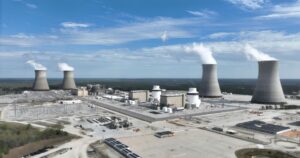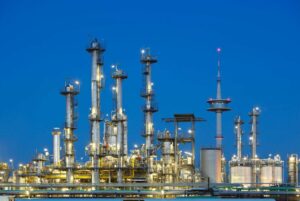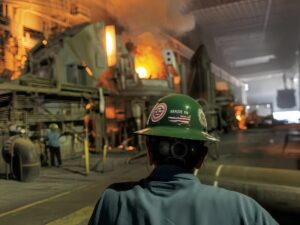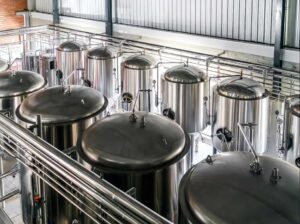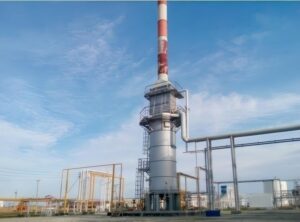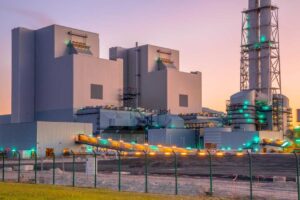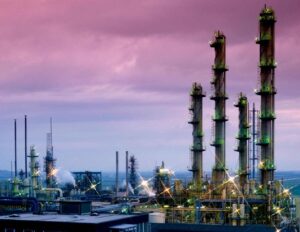Embarking on a journey of mastering heat treatment requires a trusted tool: Heat Treating Analyzers. In this enlightening blog, valuable knowledge awaits. Expect to dive deep into the world of these analyzers, uncovering their indispensable role in heat treatment processes.
Understanding the Basics of Heat Treatment!

Definition Of Heat Treatment
With them, a piece of metal can become harder, stronger, or more resistant to impacts. These are significant considerations in industries like automotive or aerospace.
To ensure quality, accurate readings of time, temperature, and carbon potential are critical. Trustworthy heat treating analyzers keep those parameters under close watch.
The Various Processes Involved In Heat Treatment
- Quenching: A rapid cooling technique used to harden steel. Heat treating analyzers ensure the metal reaches an appropriate temperature before immersion in a coolant.
- Annealing: A process that softens metal, enhances ductility, and relieves internal stress. Metals are heated to a set point, and then cool slowly.
- Carburizing: A technique where carbon is infused into a metal surface. High temperatures and carbon-rich atmospheres are essential.
- Normalizing: Involves heating metal to a certain point, then air cooling. This enhances the mechanical properties of the metal.
- Spheroidizing: Softens high-carbon steel, aiding machinability. It requires heating and cooling in a controlled manner.
- Tempering: Enhances toughness in hardened steel. The metal is heated to a lower-than-hardening temperature, and then cooled.
- Hardening: Metals are heated above their critical temperature, and then rapidly cooled. This technique increases hardness.
- Nitriding: Introduces nitrogen onto the metal surface. It enhances surface hardness and wear resistance.
- Martempering: A process similar to tempering, providing a tougher structure.
- Austempering: The metal is heated then held at a temperature within the phase transition range.
- Age Hardening: Also known as precipitation hardening. Involves heat treatment and a cooling process to enhance strength.
- Flame Hardening: Direct flame imparts heat to a metal surface, and then water cools it. Used to harden specific areas of a component.
- Induction Hardening: Uses an induction coil to heat the metal, followed by rapid cooling.
- Cryogenic Treating: Cools metals to extreme low temperatures to eliminate residual stress.
- Vacuum Heat Treating: Reduces the chance of oxidation or contamination. This method uses a vacuum to prevent contact with atmospheric gases.
The Types Of Materials That Are Heat-Treated And Why!
– Steel
Steel undergoes heat treatment to increase durability. The process hardens it, making it more resistant to wear and tear.
– Aluminium
Light yet strong, aluminium gets heat-treated for better durability. The treatment helps in removing impurities and enhancing its strength.
– Copper
Copper, known for its excellent electrical conductivity, undergoes heat treatment. The treatment improves its malleability and ductility.
– Brass
Heat treatment on brass heightens its toughness. The process aids in improving its resistance to corrosion.
– Iron
Iron, a widely used metal, gets heat treated. The process augments its hardness and toughness.
– Nickel
Nickel undergoes heat treatment to amplify its toughness. The process also enhances its corrosion resistance.
– Titanium
Titanium gets heat treated for better hardness. The process also makes it more robust and durable.
– Tungsten
Tungsten, one of the toughest metals, undergoes heat treatment. The process maximizes its resistance to wear.
– Stainless Steel
Stainless steel gets heat treated to heighten hardness. The process also boosts its resistance to corrosion.
– Zinc
Zinc undergoes heat treatment to amplify its ductility. The process enhances its resistance to corrosion too.
– Bronze
Bronze gets heat treated to heighten its toughness. The process also improves its durability.
– Carbon Steel
Carbon steel, a robust metal, undergoes heat treatment. The process augments its hardness and toughness.
– High-Speed Steel
High-speed steel gets heat treated to increase toughness. The treatment ensures it can withstand high temperatures.
– Cast Iron
Cast iron undergoes heat treatment to increase hardness. The process enhances its wear resistance, making it suitable for heavy-duty applications.
The Role of Gases in Heat Treatment!
– Nitrogen
Nitrogen acts as an effective cooling agent in heat treatment. After high-temperature treatment, nitrogen cools metals rapidly.
– Oxygen
In the heat treating process, oxygen often plays a supporting role. Mix oxygen with fuel gases to produce heat.
– Hydrogen
Hydrogen also has a crucial part in heat treatment. When mixed with nitrogen, it reduces metal oxidation.
– Argon
As an inert gas, argon protects the metal surface from harmful reactions during heat treatment.
– Helium
Similarly, helium helps in fast cooling due to high thermal conductivity.
– Methane
Methane, a hydrocarbon gas, can provide a carbon source for case hardening processes.
– Propane
Propane, another hydrocarbon gas, offers the same benefits.
– Acetylene
Acetylene generates high heat when burned with oxygen, ideal for heat treating.
– Carbon Dioxide
Carbon Monoxide and Carbon Dioxide are by-products of some heat treating operations. They need careful monitoring.
– Ammonia
Ammonia comes into play in nitriding, a surface hardening process.
– Endothermic Gas
Endothermic gas, often a blend of carbon monoxide, hydrogen, and nitrogen, offers a protective atmosphere during heat treating.
– Exothermic Gas
Exothermic gas, rich in hydrogen and carbon dioxide, also provides a protective environment.
– Dissociated Ammonia
Dissociated Ammonia serves as a source of nitrogen and hydrogen in heat treating.
| Gas | Role in Heat Treatment | Ideal Temperature Range (°C) | Common Usage | Safety Consideration |
| Nitrogen | Prevents oxidation, used in nitriding | 500-530 | Case hardening | Non-toxic, but can displace oxygen |
| Oxygen | Combusts to produce heat | Varies | Oxidation processes | Can support combustion |
| Hydrogen | Reduces oxides, produces a clean surface | 1000-1200 | Annealing, brazing | Highly flammable |
| Argon | Inert gas, prevents oxidation | No specific range | Welding, cutting | Asphyxiation risk in high concentrations |
| Helium | Inert, used for quenching | No specific range | High-speed quenching | Asphyxiation risk in high concentrations |
| Methane | Source of carbon, used in carburizing | 870-950 | Case hardening | Risk of explosion |
| Propane | Fuel source, produces heat | Varies | Heat generation | Highly flammable |
| Acetylene | Fuel source, produces high heat | Varies | Cutting, welding | Highly flammable, risk of explosion |
| Carbon Dioxide | Creates carbon-rich atmosphere | 850-950 | Carburizing, carbonitriding | Can cause asphyxiation |
| Ammonia | Used in nitriding processes | 495-565 | Nitriding | Can cause irritation, burns |
| Endothermic Gas | Reduces carbon content on surface | 850-950 | Neutral hardening | Non-toxic, but oxygen displacement possible |
| Exothermic Gas | Source of heat, reduces surface oxidation | Varies | Heat generation | Can support combustion |
| Dissociated Ammonia | Source of nascent hydrogen and nitrogen | 495-565 | Nitriding | Can cause irritation, burns |
The Importance of Heat Treating Analyzers!
– Precision
Precision is critical in heat treating, and analyzers ensure accurate temperature control.
– Quality Assurance
Quality Assurance is another vital role of heat treating analyzers. The right hardness, strength, and ductility of metals depend on precise heat treatment.
– Efficiency
By enhancing the efficiency of the heat treatment process, analyzers can minimize waste, save energy, and increase throughput.
– Productivity
Productivity goes up when heat treating analyzers keep processes running smoothly.
– Safety
Safety improves with heat treating analyzers, which can alert operators to hazardous conditions like gas leaks.
Cost-effective operations are another advantage of using analyzers, as they help reduce rework and scrap.
– Real-Time Analysis
Real-time analysis allows for instant adjustments, optimizing the heat treating process.
– Data Logging
Data logging features enable traceability and improve process control.
Speaking of process control, heat treating analyzers ensure consistent, repeatable results.
– Compliance
Compliance with industry standards and regulations is easier with analyzers.
– Reliability
Reliability is another key benefit, as analyzers reduce the chance of process failures.
– Sustainability
By optimizing energy use, heat treating analyzers promote sustainability.
– Durability
Durability of the final products increases with precise heat treatment.
– Versatility
Versatility comes from the ability of analyzers to handle a variety of materials and processes.
– Troubleshooting
Whenever things go wrong, heat treating analyzers aid in troubleshooting. They identify problem areas, speeding up corrective actions.
Heat Treating Analyzers: The Inner Workings!

The General Structure Of A Heat Treating Analyzer
Imagine a device, sophisticated yet simple. That’s a heat treating analyzer. Fundamentally, a frame encases several components. Tiny sensors capture thermal data.
A central processor crunches these figures. Remember, a robust power source fuels the operations. Interface ports enable smooth communication with other devices.
The heart of the device is the calibration system. With it, the analyzer maintains precision. In essence, these building blocks create an efficient heat treating analyzer.
Key Components And Their Functions
– Sensors
Tiny yet critical, sensors detect heat levels. Their readings guide the analyzer’s actions.
– Display
Here, numbers translate into meaningful data. The display presents information in a user-friendly format.
– Probes
Probes serve as extensions of the sensors. They reach into heat sources for accurate readings.
– Power Source
Without a power source, the analyzer is inoperative. It supplies necessary energy for operations.
– Calibration System
Accuracy is a calibration system’s responsibility. It ensures the analyzer’s readings match real-world values.
– Processor
The brain of the device, the processor, computes sensor data. It makes sense of the numbers.
– Data Logger
For future reference, the data logger records information. It’s a historian in a modern package.
– Interface Ports
These gateways allow for communication. Through them, the analyzer sends and receives data.
– Signal Converters
Converting sensor signals into a usable format is a signal converter’s task.
– Amplifiers
Sometimes, sensor signals are weak. Amplifiers strengthen them for better processing.
– Housing
All components need protection. The housing provides it, shielding them from external damage.
– Software
In today’s digital age, software drives the analyzer. It manages processes and dictates operations.
– Memory
Past data is useful for comparisons. Memory stores this data securely.
Basic Operation Principles
– Data Acquisition
Sensors gather thermal data. Data acquisition is the start of the process.
– Signal Conversion
Signal converters transform sensor signals into usable data. It’s like a translator in the system.
– Data Processing
The processor takes over. It crunches numbers and delivers meaningful insights.
– Display/Output
What good is data if unseen? The display presents it in a digestible form.
– Sensor Calibration
Accuracy matters. Calibration keeps the sensors in check, ensuring precise readings.
– Error Detection
Mistakes happen. Error detection catches them before they influence results.
– Feedback Control
Based on results, the system adjusts operations. That’s feedback control.
– System Initialization
Every journey has a start. For the analyzer, it’s system initialization.
– Power Management
Efficient use of power extends the device’s life. Power management oversees this task.
– Fault Tolerance
In case of errors, the system needs a plan. Fault tolerance provides a safety net.
Heat Treating Processes and Corresponding Analyzer Requirements!
– Carburizing
It involves the use of carbon for steel parts treatment. Here, heat treating analyzers play a key role in monitoring the carbon influx into steel.
– Nitriding
This method employs nitrogen gas. An effective analyzer checks the nitrogen gas concentration during the process.
– Quenching
Here, metal gets heated then cooled quickly. Analyzers used ensure the metal achieves a precise temperature before quick cooling.
– Annealing
Annealing involves heating a material to a specific temperature then slow cooling. Heat treating analyzers measure the cooling speed and temperature.
– Normalizing
This process refines grains in steel. Analyzers determine the temperature needed for this refinement.
– Hardening
For hardening, analyzers verify the high temperatures required to alter the steel’s structure.
– Tempering
It’s a process following hardening. Analyzers ensure the metal reaches the correct heat level to increase toughness.
– Spheroidizing
Analyzers in spheroidizing confirm if steel is at the right temperature to get softened and machined easily.
– Martempering
In martempering, analyzers help to control the bath temperature where heated steel is quenched.
– Austempering
This process needs heat treating analyzers to check if the steel has been heated to become stronger and tougher.
– Age Hardening
Analyzers measure heating and cooling periods in age hardening, making metals more resistant to wear and tear.
– Flame Hardening
For flame hardening, analyzers control the heat applied to the metal surface.
– Induction Hardening
This technique requires analyzers to oversee the magnetic field generating heat in the metal part.
– Cryogenic Treating
Analyzers used in cryogenic treating ensure metal parts reach extreme low temperatures.
– Vacuum Heat Treating
In vacuum heat treating, analyzers monitor the absence of air, ensuring the process is done correctly.
Choosing the Right Heat Treating Analyzer!

– Performance
Analyzers must perform well under different heat treating processes and conditions.
– Accuracy
Precise measurements by analyzers ensure correct heat treatment.
– Cost
Consider an analyzer’s price against its features and benefits.
– Durability
Analyzers that withstand different environmental conditions are most beneficial.
– Maintenance
Select analyzers with low maintenance needs to save time and costs.
– Size
An analyzer’s size must be suitable for your workspace.
– User Interface
Consider analyzers with user-friendly interfaces for ease of use.
– Vendor Support
Opt for vendors who provide excellent post-purchase support.
– Compatibility
Ensure your chosen analyzer fits well with existing systems.
– Scalability
Choose analyzers that can adapt to your business growth.
– Software
Software features can enhance an analyzer’s functionality.
– Hardware
Robust hardware guarantees the durability of the analyzer.
– Measurement Range
Select analyzers with a wide measurement range for versatile use.
– Response Time
Quick response time is essential for effective heat treating processes.
Calibration and Maintenance of Heat Treating Analyzers!
- Regular Calibration – Ensure consistent performance. Calibration is a must every six months.
- Cleaning – Prevent dirt buildup. Conduct a thorough clean monthly.
- Firmware Update – Enhance system operations. Schedule firmware updates quarterly.
- Battery Replacement – Secure uninterrupted power supply. Replace batteries annually.
- Sensor Adjustment – Ensure precise data. Sensor adjustment is crucial every three months.
- Leak Testing – Confirm system integrity. Perform leak tests bi-annually.
- Verification – Validate accuracy. Verification should be a monthly practice.
- Troubleshooting – Resolve issues promptly. Implement immediate action when needed.
- Part Replacement – Maintain optimal function. Replace worn parts without delay.
- Software Upgrade – Enhance analyzer capabilities. Upgrades should be completed bi-annually.
- Periodic Inspection – Uncover potential issues. Inspections should occur every four months.
- Documentation – Track performance and changes. Keep updated records at all times.
Interpreting Data from Heat Treating Analyzers!
How To Read And Interpret Data From Heat Treating Analyzers?
In-depth analysis of data from heat treating analyzers helps in understanding key parameters. Reading the measurements, temperature cycles, hardness patterns, and cooling rates is crucial. Knowledge of dew point data and atmospheric gas levels is also vital.
How To Use This Data To Make Informed Decisions About The Heat Treatment Process?
Utilize data from heat treating analyzers to make informed decisions. Determine the optimal temperature based on hardness patterns. Cooling rates can suggest changes to ramp-down times. Dew point data might call for alterations in the atmosphere. Adjust operations accordingly to optimize heat treatment processes.
Conclusion
Having traversed the informative terrain of Heat Treating Analyzers, newfound understanding greets you. Grasping their critical function, the road to mastering heat treatment becomes clear. Ready for the next step? Visit ESEGAS to turn knowledge into practice. Harness the power of these essential tools today.





